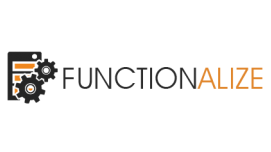Functionalize has launched a new 3D printing guide for beginners, covering design considerations, modeling parameters, and the best settings for project success.

—
The latest Functionalize guide offers practical tips, such as including a flat edge in the first layer of the design, making printing easier. It also covers slicing software, correctly applying support when angles are above 45 degrees, and the importance of maintaining adequate wall thickness.
More information can be found at https://functionalize.com/
The new guide is part of an expanding resource library for new modelers looking for tips, advice, and buyer's guides. It covers all aspects of 3D printing, from using CAD tools effectively to understanding the differences between file types, in order to ensure a smooth printing process.
It comes at a time when 3D printing is experiencing rapid growth, with the worldwide market projected to reach $98 billion by 2032, according to Precedence Research. As more look to integrate 3D printing into product development, Functionalize's guide provides the knowledge needed to build strong foundations.
The guide stresses the importance of considering the end-use application when modeling 3D-printed parts. By taking into account functionality, strength requirements, and environmental factors early on, users can maximize utility while minimizing printing time and material waste. Properly designing parts also reduces the need for reprints.
One of the main focal points is the proper wall thickness and ensuring designs have an adequate base. The guide explains how thin walls can lead to breakage, while thick walls unnecessarily consume materials and extend print times. It provides general rules of thumb for wall thicknesses based on common materials.
The guide also covers the role of tolerances in 3D printing. Because precision varies across printer models, designers must account for these differences to achieve the right fit. Functionalize recommends test prints for properly calibrating tolerance needs.
Lastly, the guide emphasizes that not every component needs to be 3D printed. Strategic use of alternative manufacturing methods for less complex sections can reduce costs and time. Hybrid models blending 3D printed and conventionally produced parts are often ideal for consumer products, Functionalize explains.
A spokesperson states: "Before you hit that print button, think twice about what needs to be printed. Not everything in your design needs 3D printing. Some manufacturing methods might do you more good. You can swap out specific parts of your design with pieces made from different methods."
Interested parties can learn more at https://functionalize.com/how-to-design-3d-printed-parts/
Contact Info:
Name: Scott Hall
Email: Send Email
Organization: Functionalize
Address: 60 W 23rd St Suite 638, New York, NY 10010, United States
Website: https://functionalize.com/
Source: NewsNetwork
Release ID: 89118281
Should there be any problems, inaccuracies, or doubts arising from the content provided in this press release that require attention or if a press release needs to be taken down, we urge you to notify us immediately by contacting error@releasecontact.com. Our efficient team will promptly address your concerns within 8 hours, taking necessary steps to rectify identified issues or assist with the removal process. Providing accurate and dependable information is central to our commitment.